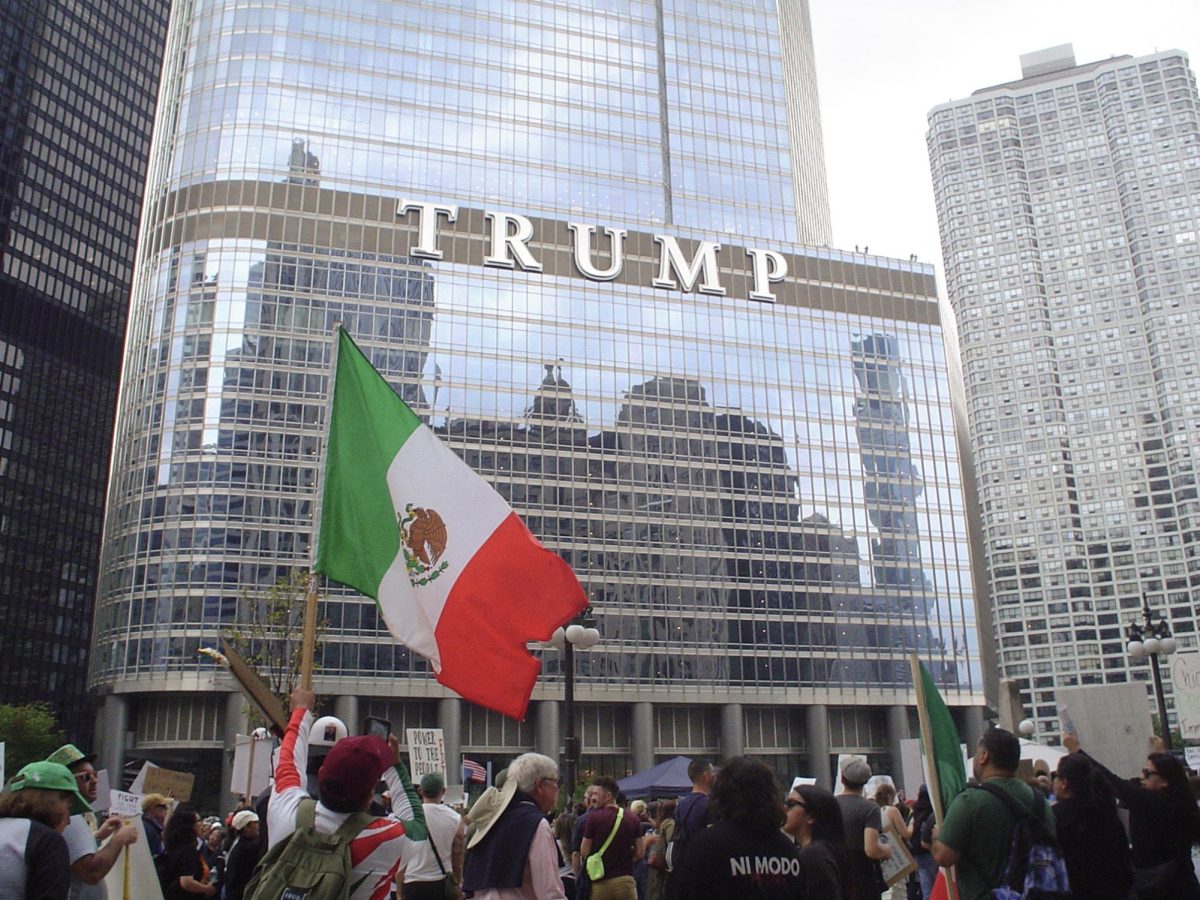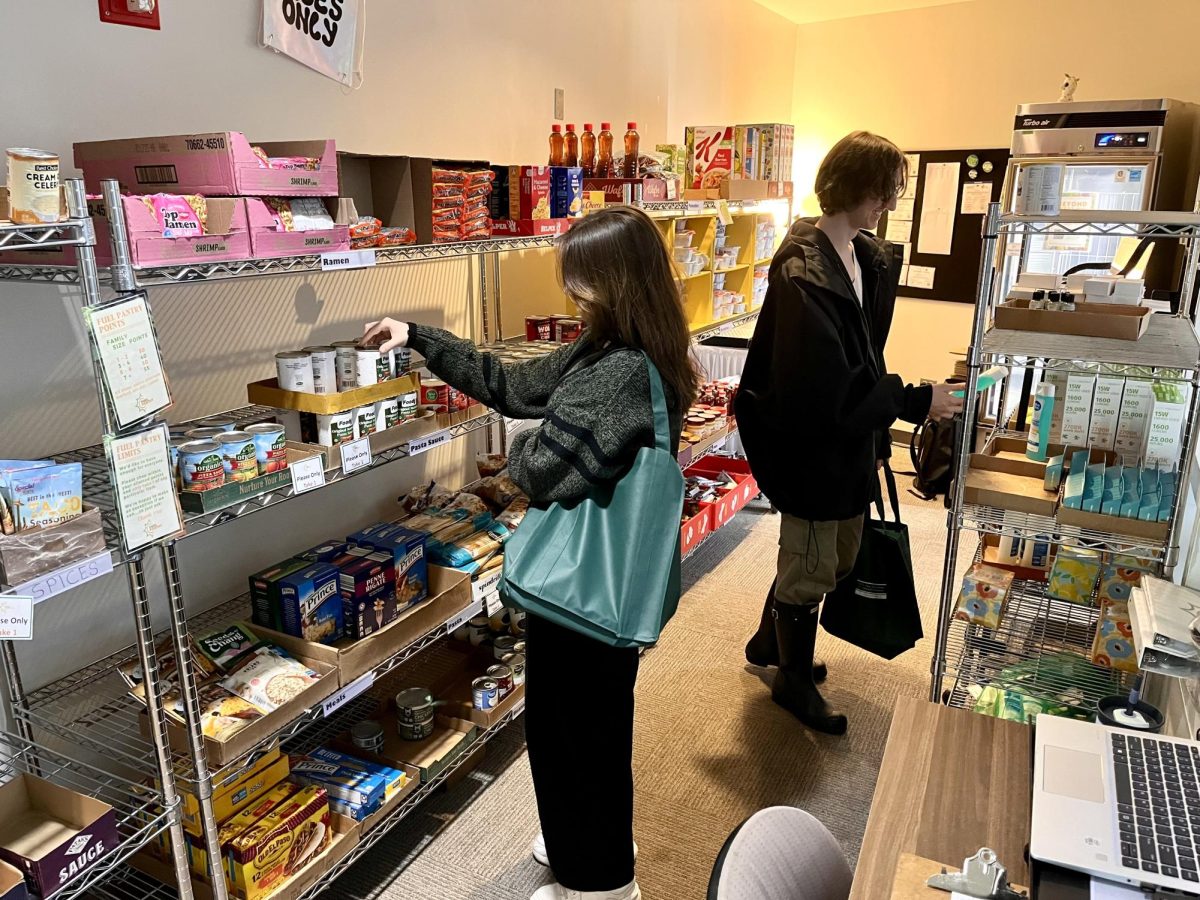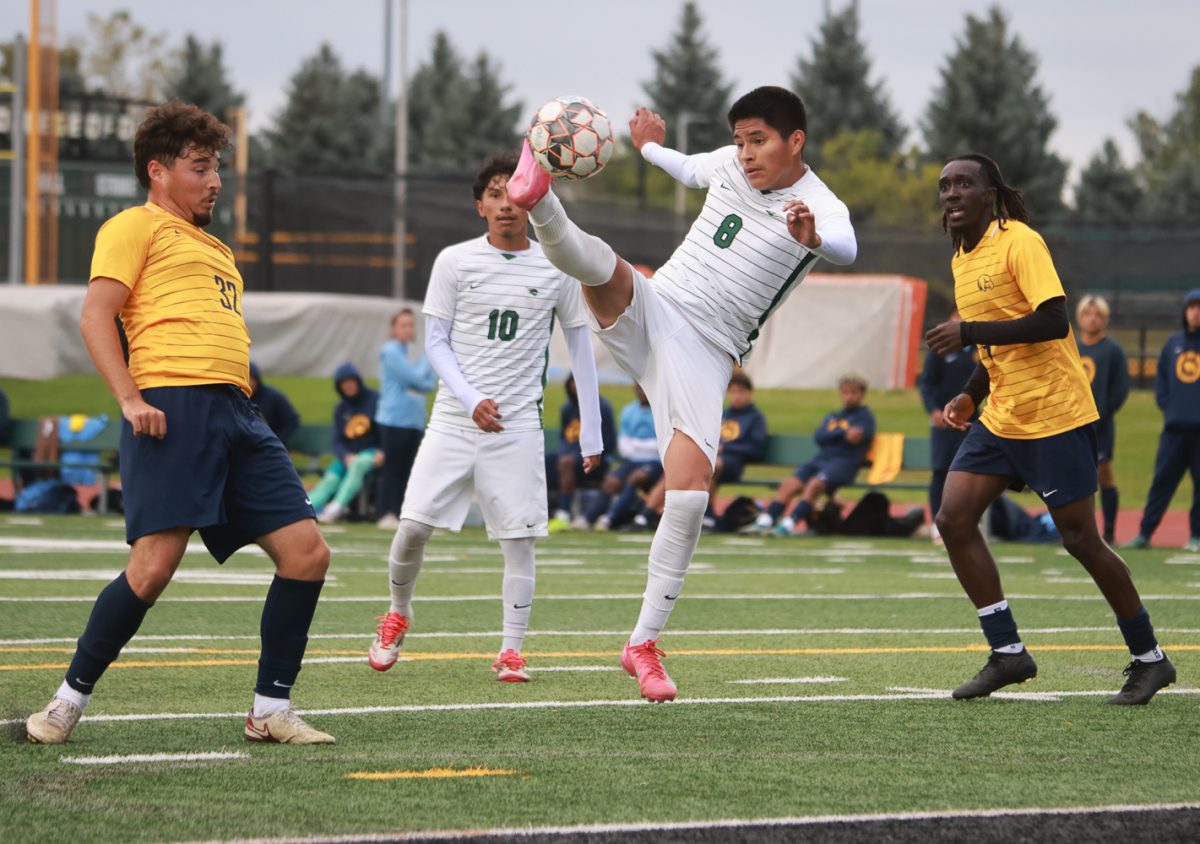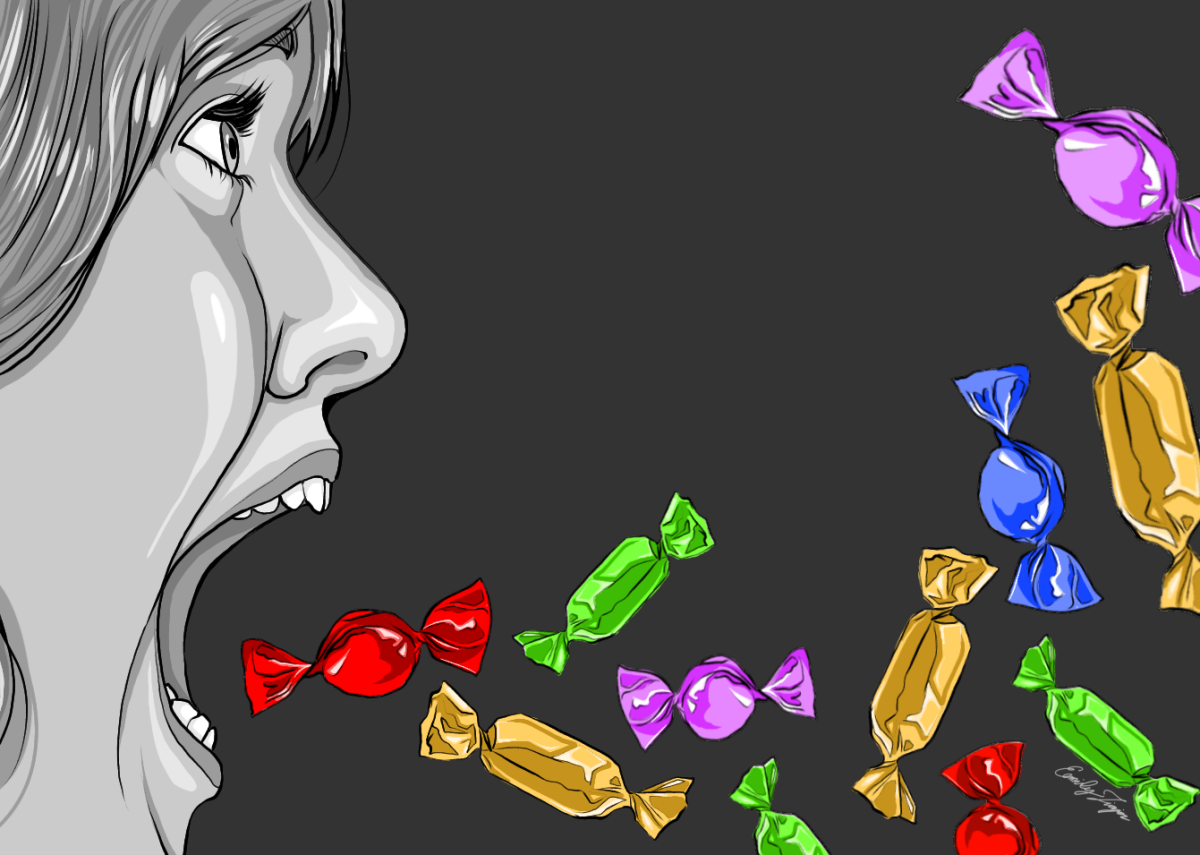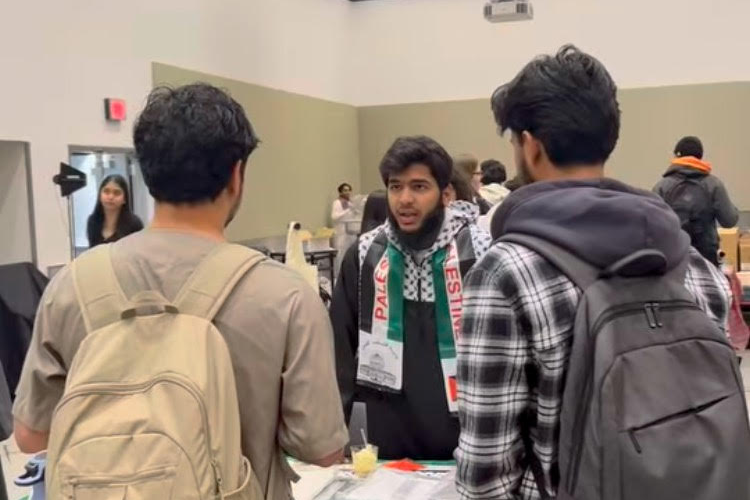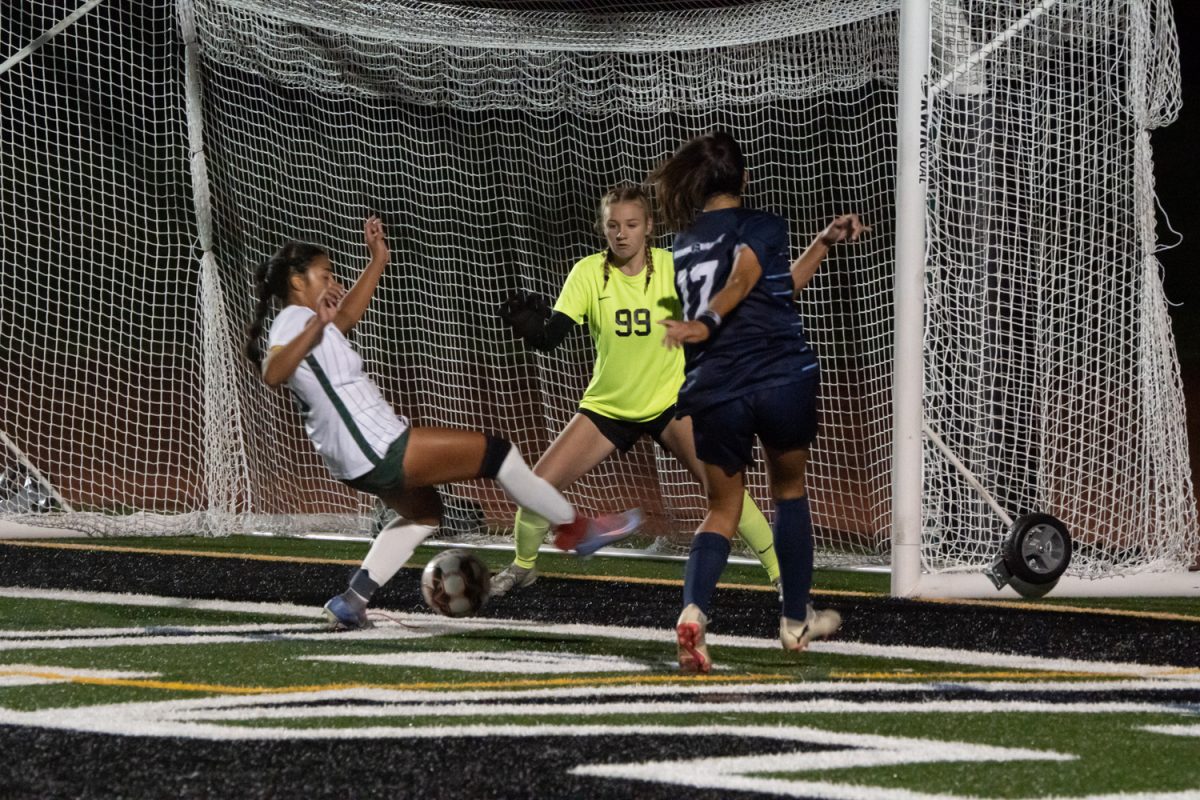The Iraq you don’t know
October 27, 2016
When I first heard I was going to Iraq, I freaked out. A lot of people told me about their past experiences. Some weren’t so bad, while others had stories about how their bus was attacked. So, in either case, I was terrified about going.
Our flight left at 9:30 p.m. on Oct. 3 from O’Hare International Airport, and we arrived in Turkey at 4:15 p.m. the next day. One thing that I can say about Turkey, is that the language is unique. My own language, Urdu, incorporates a vast majority of languages in it, so hearing people speak Turkish fascinate me.
Istanbul, being a majority muslim city had a prayer room inside the airport where our group stayed for most of the day. Before leaving for our flight we had to change in Abayas (A long black dress that is customary for women to wear in the area) along with chadars (an exceptionally long cloth that covers the majority of the body). Some of us even wore niqabs (veils that cover the mouth and nose) as we weren’t sure what the air would be like there. As we got on board the plane, I could feel the butterflies in my stomach. I was incredibly nervous about arriving in Baghdad.
On the approach we could see the tips of the mountain ranges located alongside Najaf. Upon arriving in Baghdad, we immediately took a 90 minute bus ride to Najaf, which is approximately 160 km, 100 miles south of Baghdad. Stepping off the bus, the smell of dirt and dates filled my nose. All over the city, there were incredibly large date trees that were picked barren to be sold to the coming people.
Before entering the city we had to go through a security checkpoint, which was entirely a frisk and search. There were separate ports for both men and women. For women, there was a very large curtain as a form of privacy, and when we entered, we walked through what seemed to be a home, since there were a bed and chairs. Two Iraqi women stood at the exit gates, and they searched through any and all of our hand carries and patted us down to make sure we weren’t carrying any sort of weaponry.
After that, we walked perhaps a good two blocks to our hotel. The smell of dust and dirt was incredibly strong, and the heat was intense rounding off to a solid 90 degrees Fahrenheit. We walked past a few glass window bazaars or stores along with a currency exchange. Only men ran the stores, no women. However, there were also several men on the street trying to get some business by enticing the coming group with prayer beads, chadars, or even just simply begging for money.
Upon arriving at our hotel, Qaser Al Dayafeh, the first thing to notice would be the odd statues of what appear to be Spartan warriors and classic era figures. Najaf used to be a city that was occupied by the Romans way back when, so I suppose out of respect for the Christian empire, they kept many of the artifacts. It had pretty much become integrated into the culture of the city. The sidewalk and roads were surprisingly well defined for a city that is drenched in dirt and located in a desert. The bazaars or stores here seemed to only rarely close, and, if ever, they would simply put a thick sort of sheet over it. Often times, you would see shopkeepers sleeping in their stores in the dead of night as this would be their only home.
However, many people who did not have such luxury would make their way to the shrine. During this time, the shrines never closed, so many people would sleep inside or around the shrines on carpets. The homes here were made of stone and were not as broken down. The streets here were surprisingly clean. There were a few stray cats that roamed around the area as well.The cats were the most common wildlife seen in Najaf.
On Oct. 6 we went to Kufa, which is approximately 5.3 km (3.3 miles) away from Najaf. There we visited a few of the shrines and mosques. Kufa had dirt roads. The place was covered with dust, which is fairly normal for a desert area. However, this is where we saw our first donkey carriage, along with our first female driver. There was a lot of walking here, though, which was incredibly exhausting. In 90 degrees Fahrenheit, it became a very good thing that we had water bottles with us.
On Oct. 8 we took our bus to Karbala, the center of Iraq and our two-week long stay. Normally, when people think of Iraq, they think bomb blasts and bullets flying, and of course, this is what popped in my head as we climbed the bus for Karbala. I was shocked to see a beautiful city full of lights that never seemed to sleep.
Approximately a century ago, this place was a desolate land where nothing could grow. Evolving from that into a big city, despite the warfare, was quite a feat. Here the smell of dirt, figs and olives was strong, but not as strong as the smell of nicotine. Every man in Karbala is seen smoking, and if he isn’t it is because he just finished. Alongside that, Arab women also smoke cigarettes, hookah (extremely strong tobacco that is vaporized) and sheesh (Irani hookah, often not as strong as Arabic hookah).
Here, the security checkpoints dotted the city every 1,000 feet. Security guards were everywhere. They announced their presence with either a customary green and black, or plain black uniform for soldiers and security personnel, or a bluish or brown uniform for police. They all wore bulletproof vests, often with bulletproof masks. And every security personal or guard had a gun and some sort of other form of weaponry, which made them seem incredibly scary. However, many of the guards were incredibly friendly and helpful. If they saw that you look worried or lost, they would often come up to you and, in their broken English and Urdu, try to help. Often times, they would even escort people back to their hotels.
Our hotel, Rayaheen Al Mahdi, was located in an alleyway, which would seem creepy to some people, but not to us. To our group, it seemed almost like home, as we quickly learned and picked up on the Arabic words of the Iraqis and the Persian words of the Iranians. Walking the dirt roads of Karbala, immediately you notice the lights lining the bazaars (stores). The bazaars here were filled with prayer beads, chains, necklaces, keychains, bracelets, rings, prayer rugs, books and so much more. Here, you could also see the finest Iraqi Craftsmanship. Rings and necklaces were made of Chandni (Persian word meaning a metal alloy that is built to protect and be resistant to fire), and Jowher (Arabic word, gold and metal alloy known to be incredibly strong and often times even used in weaponry). Dur-e-Najaf (Stone unique to Najaf, made from dirt hardening and turning into a white/clear stone), Aqeeq (Found in different colors, known to protect the wearer from fire), and Firoza (Most often a baby blue, known to give the wearer confidence and justice) are just a few selection of the types of stones that are unique to this location.
Here, there was no threat of being looted or things being stolen. The people here had a mutual respect for one another, which was amazing to see. The shop keepers that closed the stores would simply put a cloth over their shops to indicate that it was closed.
The next thing to notice were the number of garbage bins lined alongside the road. Despite it being a third world country, the people tried desperately to find ways to keep their streets clean, filling the garbage cans and having garbage trucks come through daily to pick everything up. Alongside this, in 2010 Iraq was finally able to build two wastewater plants for their sewage system. Although it cost a lot of money to them, and much manual labor, they try their hardest to keep their city in the best condition possible.
Despite the three blocks we had to walk and the security checkpoint we had to cross, getting to the shrine was never difficult. In this desert land, where temperatures reached over 100 degrees Fahrenheit and the dust filled our lungs, there was never any shortage of water. People would put water boxes, much like our water bottles only with thinner plastic, into ice coolers for people to take and to drink. There were lambs and goats lined up in pens, prepared for slaughter, cooked fresh and then handed out to the people for free. It seemed like a second home, where you could get anything and everything you needed.
However, the poverty here was high in the sense that the people had very little money. Despite this, they did so much in the name of their religion. The shrines, located in the center of the city were filled with jewels. The outside domes surrounded by gold plates and doors made of Jowhar and silver. Inside, there are huge chandeliers made of fine glass, silver along the walls and diamonds on the ceiling. Red velvet carpet and marble tiles line the floor of the shrine.
To anyone it becomes apparent as to how much the people here care and have faith in their religion. However, because of this it was also apparent as to why there was so much security. When I asked a security officer how many people were in the city that they had to protect, he said 4.5 million. I knew that this was only a fraction of the people who were coming the next few days. In total there were 30,000 to 100,000 security personnel and troops. And as the days passed I could hear the rotating wings of helicopters and the roars of fighter jets overlooking the city to keep it safe from the air.
One thing that everyone was incredibly cautious of here were cameras and mobile phones. And while this might be because of the fact that many explosive devices are associated with such technology, it was also because people tend to go a little crazy when miracles occur inside the shrine and end up disrespecting it. While there, we happened to chance upon a museum inside the shrine. This museum contained ancient artifacts, spears, vests, batons, rifles, gunpowder, rugs, vases and ancient lanterns.
The most interesting part of the museum that we saw were the gold plates and tiles that were from when Saddam Hussain launched his attack upon the shrine in Najaf. Behind thick glass lay a 2-foot by 5-foot marble floor tile filled with bullet marks along with pieces of the door where the bullets went through. Four 1-foot by 10-foot tiles of gold plates sat, one lined on top of the other, the way it would upon a dome. And on that gold plate, you could see where the blast had hit. The piece of gold had been gashed and melted and had turned gray and ashy with bullet marks. It also contained the Alam (Shiite flag that is set on the top of the shrine and often times in balconies of homes), that had been burned and tattered in the attack. This attack was the main reason for such security.
Despite this, Iraq has been unable to shake itself free of the hold of Daesh (Isis terrorists and terrorists like Isis). On Oct.14 we took a bus to visit the frightening cities of Samara and Balad with a final destination of Kazmain, the northern part of Baghdad. The reason for Samara and Balad being so frightening is the hold that the Daesh had upon it last year. The group that went last year, the day before their departure for Samara, a bomb blast had occurred, nearly obliterating the single shrine that stood there. Because of this, all roadways had been blocked off, and it had become impossible to get into and out of the city.
This year, however, things were better, but the amount of security was intense and the checkpoints here were brutal and for good reason. The Shiite forces were able to rescue several refugees and keep them safe in Balad, but they became very wary of outsiders. Upon our arrival in Kazmain, we stayed in Deuf Kadhimia Palace hotel for the single night before our return flight. We missed Karbala. There was no passing out of water. However, the shrine here was perhaps even more beautiful than that in Karbala because of the colors and craftsmanship put into it.
The beauty and grace of Iraq left us in a raw state of mind, one that stayed with us even after we returned here. It is almost impossible to think of country that is so battered and broken but is still able to stand on its own. The city of Karbala taught us what it is to actually be human. It changed our whole perspective on our lives here in america. The whole experience allowed us to change our definition of want versus need especially in the aspect of what is truly important in life. Their kindness and hospitality rived our hearts, and altered our minds. They were in the zenithal stage of poverty and had nothing to offer, and yet they tried their very best to make us feel welcome and at home. The entire experience changed the definition of what it means to be humble.














